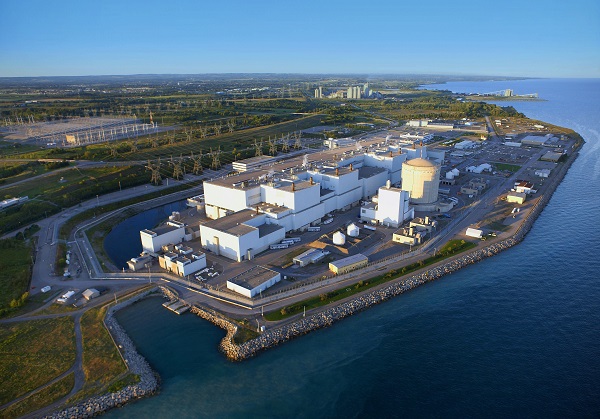Nuclear waste in Canada, 2024 will be the decisive year
TORONTO – 2024 will be the decisive year for the (almost) definitive storage of Canadian nuclear waste: towards the end of the year that is about to begin, in fact, the Nuclear Waste Management Organization (NWMO) plans to select the site for the storage deep geological facility in which millions of used nuclear fuel bundles will be placed in a network of rooms connected by cavernous tunnels, at a depth as deep as the Cn Tower.
There are two “candidate” sites: they are located in the Wabigoon Lake Ojibway Nation-Ignace area in northwestern Ontario and in the Saugeen Ojibway Nation-South Bruce area in southern Ontario. The municipalities involved and the First Nations are planning the votes, the culmination of a process that lasted more than twenty years: the NWMO was in fact established in 2002. Financed by companies that generate nuclear energy (such as Ontario Power Generation and Hydro-Quebec), the NWMO hopes at least one of the two areas says yes: two rejections would represent a major setback for a project costing $26 billion.
“Ultimately, if both areas say no, then we have to start over” said Lise Morton, vice president for site selection.
According to Global News, in South Bruce there are plans to hold a referendum. The mayor sees great potential for direct and indirect job creation if the depot is located there. “In this area we’ve been a little bit left out of the big boom that Ontario has seen so far” said Mark Goetz, mayor of South Bruce. But there are a good number of people in the community – about 20% – who are not convinced and who support Protect Our Waterways, the main opposition group. South Bruce is in fact in the shadow of Walkerton, Ontario, where seven people died and thousands became ill after drinking contaminated water in 2000. Fears about drinking water have persisted long after the tragedy, said Bill Noll, vice-president by Protect Our Waterways. “There is a great deal of concern about water” Noll said. And the water also weighs heavily on the minds of members of the Wabigoon Lake Ojibway Nation, who have seen members of another northwestern Ontario First Nation on the English-Wabigoon River system deal with generations of mercury poisoning after a mill Dryden dumped 9,000 kilograms of that substance. in the 60s.
But within the planned repository, radioactive materials would be subjected to multiple layers of protection, and for contamination to occur, “everything would have to fail,” said Ulf Stahmer, senior transportation engineer at the NWMO. The outermost protective layer is the rock itself, with the deposit approximately 500 meters deep in a rock formation selected for its low permeability. Then come the bentonite clay blocks which enclose further layers within them: inside the bentonite clay will be containers made of carbon steel and coated with copper to prevent corrosion. These containers were subjected to crush tests weighing between 500 and 700 meters of rock plus two kilometers of ice; they are therefore designed to also simulate a future ice age, Stahmer said. “These containers will be able to survive for a long time. Essentially forever”. Inside the used nuclear fuel containers will be fuel bundles, or rods, made of corrosion-resistant Zircaloy. Those packs contain the actual fuel pellets, which look a bit like a thick watch battery. They are made from uranium dioxide powder and fired into ceramic, which does not dissolve easily in water.
But all the testing, planning and modeling isn’t easing the fears of the project’s critics, particularly those at Southern Ontario-based Protect Our Waterways and those at We The Nuclear Free North. “The whole thing is a big experiment” said Brennain Lloyd, a member of the northern group of opponents of the project. “There is no deep geological deposit anywhere in the world. The NWMO likes to say, ‘Well, this is international best practice,’ but the word ‘practice’ implies that it’s been done before. And there is no ‘practice’ here, because no one has ever done it before”.
Canada’s current reactor fleet will produce approximately 5.5 million used fuel bundles, with approximately 3.2 million already in on-site wet or dry storage at nuclear power plants. After spent fuel rods exit a reactor, they spend about 10 years cooling in pools of water before being stored in containers with thick concrete walls lined on the outside with a steel plate. These containers are designed to last 50 years, so they are not seen as a long-term solution. The NWMO estimates that regulatory approvals will take approximately 10 years and construction will take approximately 10 years. The used fuel will be loaded over a period of approximately 50-60 years, then it will enter an “extended monitoring” phase which will last approximately 70 years. What will happen next is difficult to predict exactly, but one thing is certain: that nuclear waste is now here and must be put somewhere.
In the pic above, the Darlington Nuclear Generating Station in Ontario (photo from https://www.opg.com/power-generation/our-power/nuclear/darlington-nuclear/)



